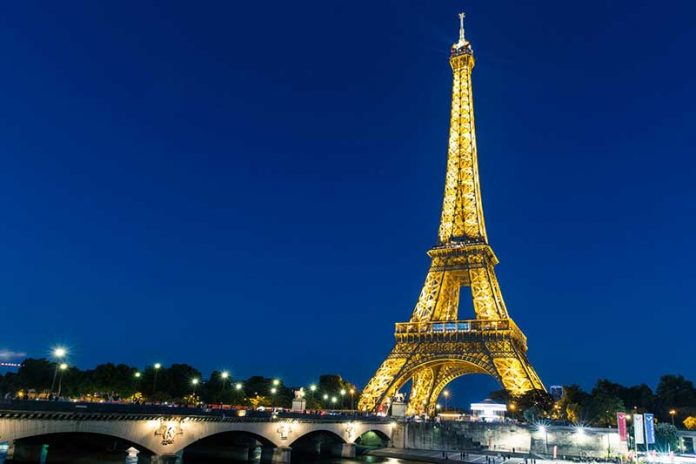The French affectionately call their beloved homeland “l’Hexagone” because of its distinct six-sided shape. This beautiful and diverse land is bordered by the English Channel, the Atlantic Ocean, the Mediterranean Sea, Italy to the south, Switzerland and Germany to the east, and Belgium to the north. From the seaside to the mountains, each region of France has its own unique character: the awe-inspiring French Alps, sun-drenched rural Provence, the glamorous French Riviera, the scenic coastal province of Brittany, and charming Alsace with picture-perfect hamlets nestled in vine-covered hills.
Paris: Known for its elegance and joie de vivre, Paris is a grand European capital city. The French have an expression that “there is only one Paris” (“il n’y a qu’un Paris”) because this magnificent city is truly incomparable. Even the polished photos in tourist brochures do not do justice to the beauty of Paris. The city is filled with architectural masterpieces, like the famous Eiffel Tower and the majestic Notre-Dame Cathedral that reflect the city’s rich heritage. The Louvre contains one of the finest art collections in the world. For French Impressionist art, the Musée d’Orsay and the Musée de l’Orangerie offer endless treasures.
Normandy: This is a quaint pastoral region, covered with apple orchards and cow pastures and dotted with historic castles, inspiring churches, and picture-perfect towns. Normandy also boasts one of France’s top tourist attractions, Mont-Saint-Michel. Known as the ‘The Heavenly Jerusalem’, this 11th- to 13th-century Gothic abbey was a medieval pilgrimage site and is now listed as a UNESCO World Heritage Site. For those seeking relaxation, Normandy’s seaside resorts Deauville, Trouville, Dieppe, Étretat, and Fécamp are wonderful summertime destinations.
The Alsace Region: The historic cities of Strasbourg and Colmar, along with the hundreds of Alsatian villages, have a charming character that is completely distinct from the rest of France. The architecture and ambience of Alsace was influenced by neighboring Germany, as seen in the brightly-painted, half-timbered houses and venerable Gothic churches. Strasbourg enchants visitors with its narrow cobblestone streets, scenic canals, and ornate cathedral. Colmar is the quintessential Alsatian town, full of interesting old churches and traditional houses with flower-bedecked balconies. Outside these two cities is an unspoiled landscape of vine-covered foothills.
The Burgundy Region: For a taste of quintessential France, visit the Burgundy countryside. This pastoral landscape of lush woodlands and rolling hills is dotted with impressive monuments. Romanesque churches, ancient towns, and inspiring old abbeys attesting to a rich cultural heritage that dates back to the Middle Ages. Top attractions are the historic city of Dijon, with its aristocratic palaces, the medieval town of Beaune that delights with its old-world charm.
The Côte d’Azur: The French Riviera is a glamorous stretch of Mediterranean coastline known in France as the Côte d’Azur because of the mesmerizing azure-blue waters. The Côte d’Azur has something for everyone. Nice is the place to enjoy life, visit art museums, and stroll along charming cobblestone streets and stunning seaside boulevards. Saint-Tropez, Cannes and Monaco are glitzy resort towns, playgrounds for the rich and famous that are dotted with lavish vacation villas, luxury hotels, gourmet restaurants, private beaches, and yacht-filled marinas. Many sunbathers and nature lovers prefer Antibes for its expansive sandy beaches and natural environment.
The Châteaux of the Loire Valley: Like the scene of a fairy tale, the Loire Valley is a lush, wooded landscape dotted with magnificent castles along the gently flowing Loire River. Stretching for 280 kilometers, from Sully-sur-Loire to Chalonnes-sur-Loire in Anjou, the Loire Valley is the largest UNESCO-listed site in France. The region boasts an incredibly rich cultural heritage. During the 15th and 16th centuries, France’s kings built sumptuous country retreats here purely for entertainment and enjoyment. Extravagant châteaux, such as the grandiose Château de Chambord and the emblematic Château de Chenonceau, offer insight into the opulence of the Renaissance-era French court.
The French Alps: Boasting some of the most awe-inspiring natural scenery in the world, the French Alps draws many tourists for alpine skiing, snowboarding, and cross-country skiing. Besides the spectacular mountain terrain, the region also has a rich cultural heritage linked to the ancestral territory of the Italian royal House of Savoy as well as the historic Dauphiné region. The lovely mountain village of Chamonix offers traditional alpine charm, while Annecy has an ancient château, lakeside scenery, and fairy tale ambience.
Prehistoric Caves in the Dordogne and the Pyrenees: France’s Dordogne region boasts incredible sites for viewing prehistoric cave art. To admire the masterpieces of prehistoric man, the UNESCO-listed Lascaux Cave in the Dordogne’s Vallée de la Vézère is a must-see site. This cave contains beautifully rendered prehistoric paintings, among the finest examples of Paleolithic art in the world. In the mountainous Pyrenees region is the Grotte du Mas d’Azil, an amazing cave decorated with intricate drawings.
Cirque de Gavarnie in the Pyrenees Mountains: The mountainous Pyrenees region is an inspiring place that offers both natural splendor and spiritual wonders, with many sacred pilgrimage sites. The UNESCO-listed Cirque de Gavarnie is nature’s version of a cathedral. Forming a semicircle, the awesome 3,000-meter-high granite rock walls are draped with dramatic waterfalls that lead down to rushing rivers and peaceful streams. The entire Hautes-Pyrénées region is part of a national park, the Parc National des Pyrénées that borders Spain. Within the park are hiking trails through lush forests and verdant valleys.


























